The intricate details of Central European University impress on RIBA's 2018 international shortlist
By Katherine Guimapang|
Tuesday, Nov 13, 2018
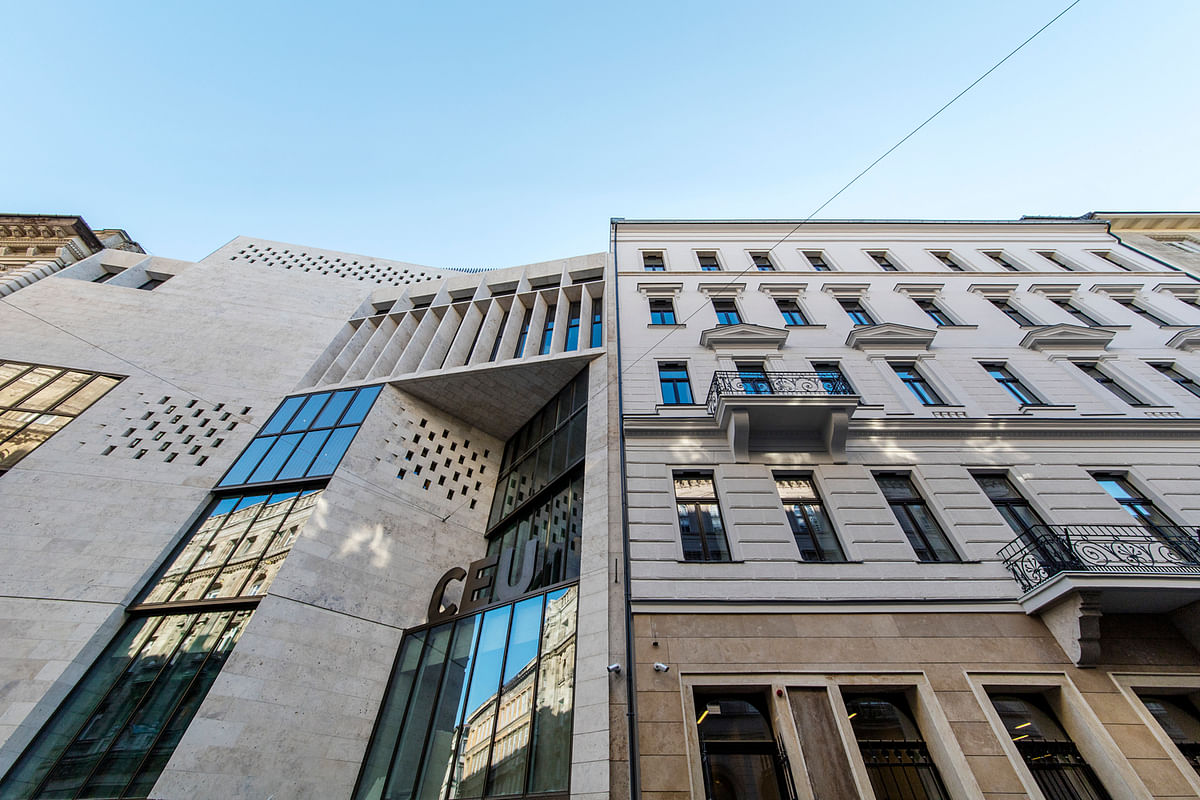
Related
Located in Budapest, Hungary is Central European University. An institution that has stood in Budapest since its relocation from Prague in the early 1990's. A combination and preservation of old and new were the driving forces behind the campus' redesign. Consisting of a specific palette of materials, the refurbished university uses stone, timber, concrete and steel to form the structure. In order to highlight the continued tradition of the solidity and permanence of Budapest's stone architecture, the building façade emphasizes the rich history of its neighboring buildings.

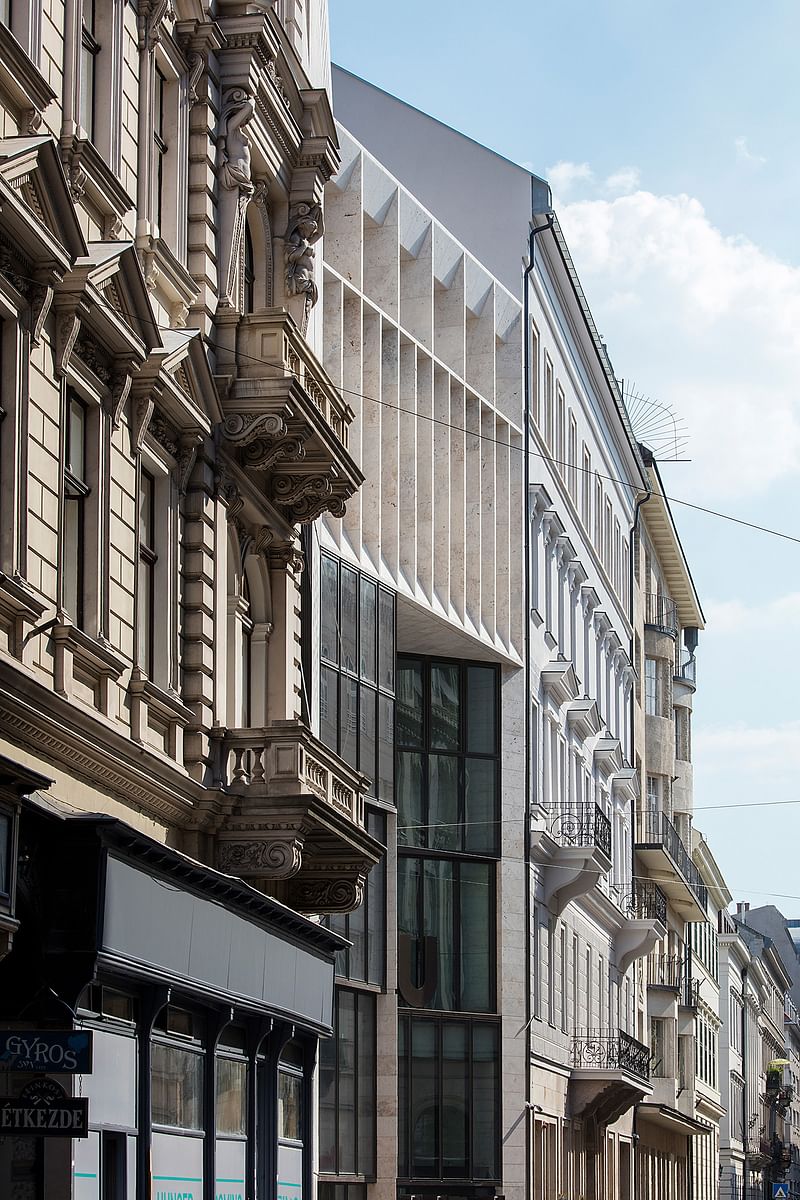
On its exterior details of the campus' façade can be spotted amongst the historical streetscape. Although repetitive, the buildings along this pathway do not vary much except the slight difference in parapet height. However, the newer contemporary approach to the building's façade blends nicely with its neighboring structures partly due to its materiality. Limestone locally sourced and taken from the same quarry is it's neighbors, the approach of the architects was to insert a contemporary style that would still highlight the surrounding structures.
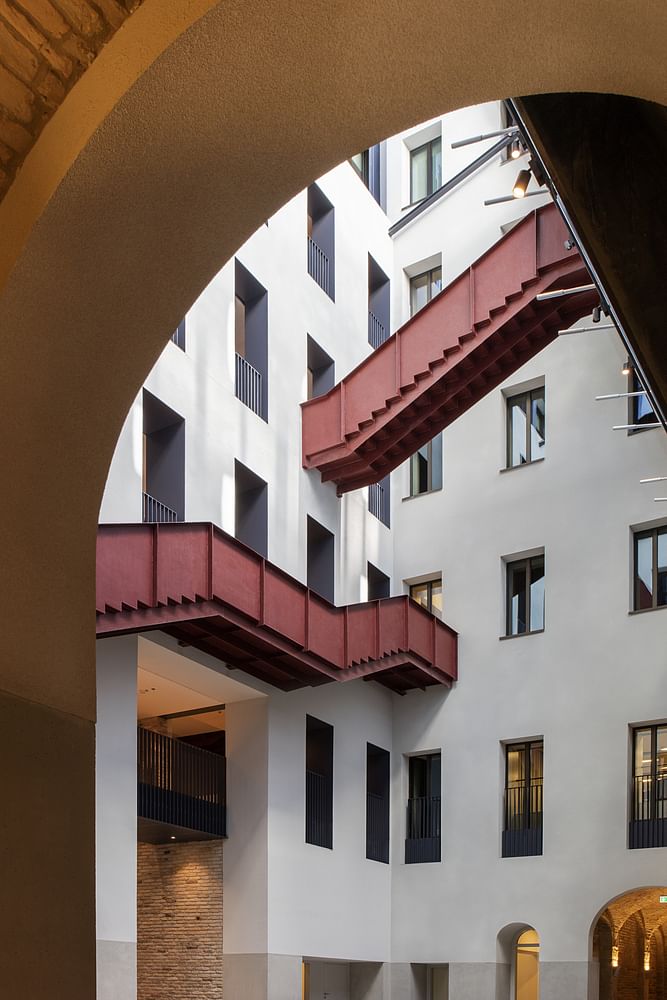
At its interior, the intricate details of interconnectivity within each building is beautifully orchestrated. The original layout of the campus had few areas of intersection and were subject to their own entrances. According to the team at O'Donnell and Tuomey Architects, the goal was to redefine the downtown urban block and transform the space into an open campus, by creating "metaphorical crossroads." Since Budapest is known as the city of courtyards and passageways, the architects strategically linked new and existing areas of the campus through a connection of courtyards. The layout was designed to intentionally foster a communication between different academic departments, and adjacent areas to illicit interaction and collaboration.

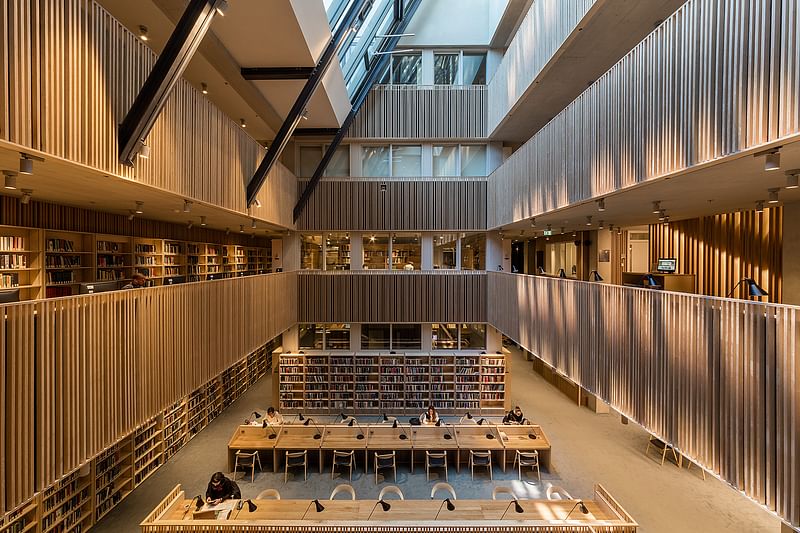
Through its construction phase, specific buildings and courtyards that were proving to be inefficient were demolished. Comprised mostly of these open spaces, roofs were integrated to create a tempered environment that could provide coverage and shade during varying climates throughout the year. Resembling an almost whimsical like aesthetic, the campus that lays behind its façade is fitted with flying staircases and opened cutouts. With the new building on Nador Utca forming as the campus' main entrance, it houses various multi-purpose auditoriums, conference facilities, learning commons, and the library.
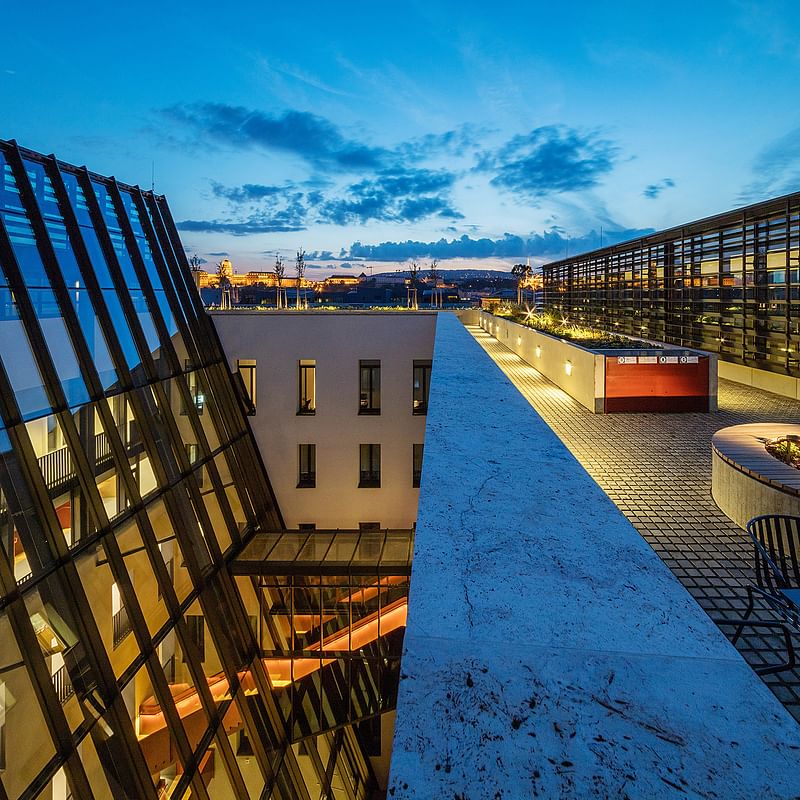
Above are roof gardens that overlay both buildings. By providing a beautiful view of the city's skyline, it also plays a crucial role in regulating the building's temperature. The landscape gardens located on both newer and older roofs of the campus have been coined the "hanging gardens of Budapest." Offering other sustainable practice benefits, these gardens provide shade as well as air filtration. The natural ventilation provided throughout the building partakes in the low-carbon economical strategy that the architect's strived for.
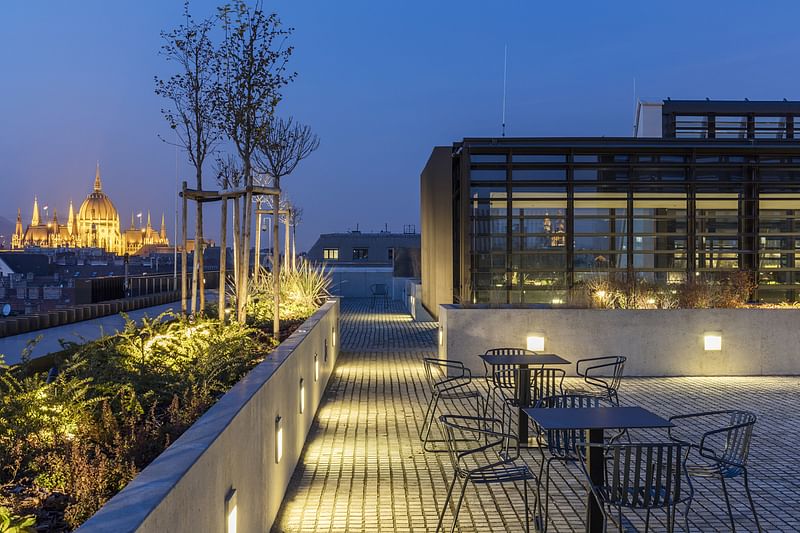
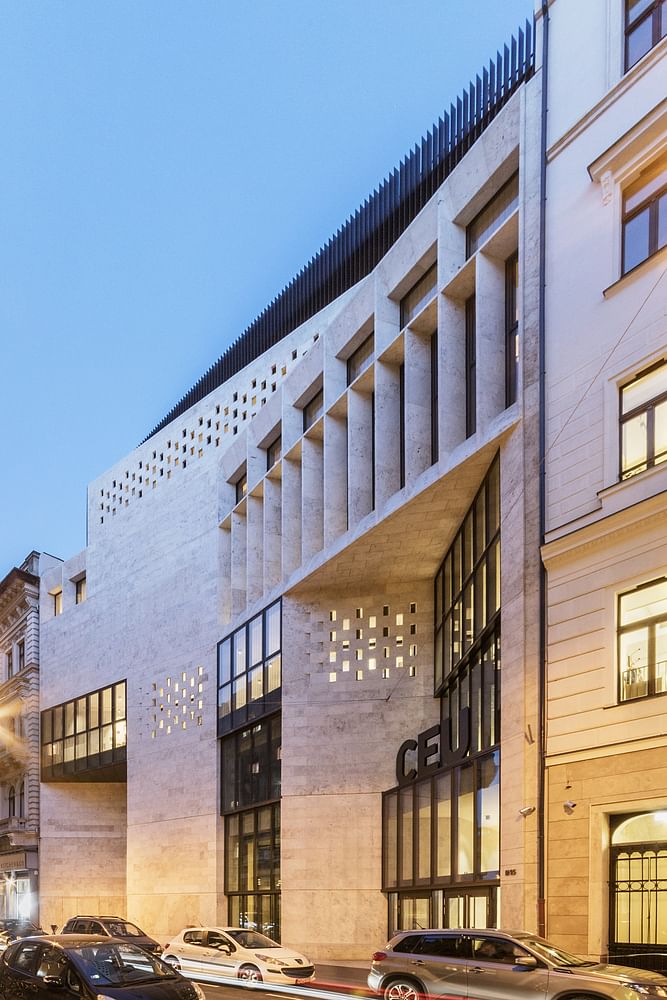
The long lasting affects the campus will offer both academically and structurally within the city is emphasized by the detailed efforts and design strategies made. The team of O'Donnell and Toumey provided the university with a new refurbished look that will continue last. The joining of 5 historical buildings with 2 new structures creates an added life to the campus as a whole.


Share
0 Comments
Comment as :